- News
- Reviews
- Bikes
- Components
- Bar tape & grips
- Bottom brackets
- Brake & gear cables
- Brake & STI levers
- Brake pads & spares
- Brakes
- Cassettes & freewheels
- Chains
- Chainsets & chainrings
- Derailleurs - front
- Derailleurs - rear
- Forks
- Gear levers & shifters
- Groupsets
- Handlebars & extensions
- Headsets
- Hubs
- Inner tubes
- Pedals
- Quick releases & skewers
- Saddles
- Seatposts
- Stems
- Wheels
- Tyres
- Tubeless valves
- Accessories
- Accessories - misc
- Computer mounts
- Bags
- Bar ends
- Bike bags & cases
- Bottle cages
- Bottles
- Cameras
- Car racks
- Child seats
- Computers
- Glasses
- GPS units
- Helmets
- Lights - front
- Lights - rear
- Lights - sets
- Locks
- Mirrors
- Mudguards
- Racks
- Pumps & CO2 inflators
- Puncture kits
- Reflectives
- Smart watches
- Stands and racks
- Trailers
- Clothing
- Health, fitness and nutrition
- Tools and workshop
- Miscellaneous
- Buyers Guides
- Features
- Forum
- Recommends
- Podcast
TECH NEWS
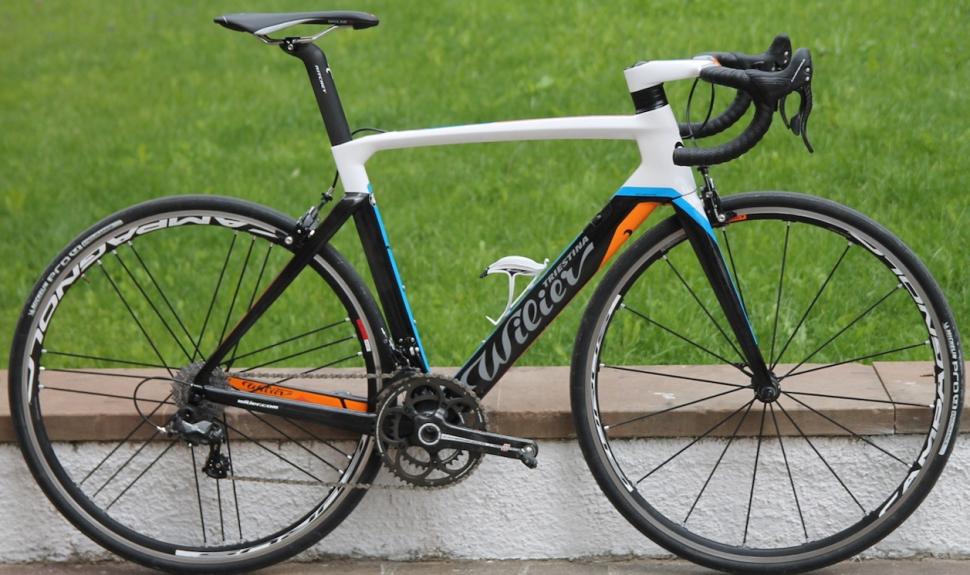 Wilier Cento10Air
Wilier Cento10AirWilier Cento10Air unveiled - faster, lighter and more comfortable aero road bike
We’re living in an era of aerodynamic road bikes, and Wilier, an Italian company which this year celebrates its 110th birthday, has launched the all-new Cento10Air.
Key features:
- Aero frame and fork
- 990g frame weight
- Direct Mount brakes
- 28mm tyre clearance
- Integrated handlebar and stem
- Fully internal gear cable routing
- Widely spaced fork blades and stays
The Cento10Air is the evolution of the company’s first aero road bike, the CentoAir, but this a clean sheet redesign. Key design principles have been the search for improved aerodynamic performance, naturally, but also the quest to produce a lighter frame, using both its Twinblade time trial bike and the lightweight Zero 7 as points of reference.
This new bike has already been spotted out in the wild. If you were paying close attention to the Giro d’Italia this year, you might have spotted Italian cycling superstar Filippo Pozzato putting the new bike through its paces.
So what’s new then? Everything. Firstly, Wilier has utilised Kamm Tail shaped NACA airfoil tube shapes for every section of the frame, from the down tube to the seat tube and seatpost. The profiles and the junctions of the different tube sections have been honed with the use of CFD testing, computer software which allows easy manipulation of the frame and test results, which Wilier tells us, are accurate enough that it doesn’t feel compelled to conduct expensive wind tunnel testing. The result of the development leads Wilier to claim an 8% aerodynamic improvement over the previous bike.
Key to the Cento10Air is a new one-piece integrated handlebar called the Alabarda. Like the frame, it too uses an NACA profile, and is intended to reduce the frontal surface area, and contribute to the overall aerodynamic improvements. Like Specialized with its Venge Vias, Wilier has routed the gear cables inside the handlebar and stem and directly into the frame.
To accommodate the internally routed gear cables, Wilier has flattened the front of the steerer tube to provide just enough space for the gear cable housing to squeeze in the cavity between the steerer tube and frame. A special headset top cap directs the cables into the head tube, and the outer cable housing terminates a short way down the down tube, where Wilier has integrated a front
A special headset top cap directs the cables into the head tube, and the outer cable housing terminates a short way down the down tube, where Wilier has integrated a front mech barrel adjuster.
It hasn’t, though, routed the brake cables inside the stem and around the steerer tube. Wilier told road.cc that while it did consider designing a proprietary integrated brake, it decided to go with the simple option and allow consumers to specify readily available brake calipers, and that the small amount of drag produced by the exposed cables would be offset by the ease of setup and adjustment.
The Alabarda has a 10.5-degree stem angle, intended to produce a flat stem both to reduce drag and lower the front-end, which is 18mm lower than the previous bike. Through a system of easily removable split spacers, there is a total of 30mm of height adjustment. The handlebar will be offered in six reach and drop variations, from 90mm x 400m up to the 133mm x 420mm developed specifically for Pozzato.
Keeping the drag to a minimum and cleaning up the front-end, the handlebar has a small recess to hide away a Di2 or EPS junction box, with a small plastic clip to secure it into place. Wilier has developed a range of Garmin and computer out-front mounts that can be attached via two bolts to the bottom of the bar.
The adoption of Shimano’s Direct Mount brake caliper means the bike accepts up to 28mm tyres, a bonus if you value comfort as well as aero performance. The use of direct mount brakes has also allowed Wilier to move the seat stays and fork blades away from the wheel rims, the space created is claimed to reduce drag because the air being squeezed between the frame and rim is less turbulent.
Another development to improve the aerodynamics is the lowering of the seatstays where they meet the seat tube. The design is apparently as low as the UCI rules permit. There are three bottle cage mounts on the down tube so, if using a single water bottle, the cage can be mounted lower.
An aero seatpost produced by Ritchey and made from carbon fibre is apparently a full 50% lighter than the one used on the previous frame. It has a 20mm offset and uses a single bolt clamp mechanism, and the seatpost clamp is hidden in the top tube.
As well as improving the aerodynamics of the frame, Wilier was also keen to get the weight down, and it’s managed to shave a full 200g off the frame compared to the previous Cento1Air, so it now weighs about 990g. Wilier reckons it can go lighter and might look at a lighter version in the future. The frame is made from a mix of 60 and 40-ton carbon fibre. The use of a standard pressfit 30 bottom bracket was made because it saves a bit more weight.
The new frame will be available in six sizes with the tube profiles and size specific to each size. The downtube ranges from 56.3mm profile on the smallest frame to 67.5mm on the largest frame size, a 2.5mm difference between each frame size.
Prices
There will be five models priced from £4,599 up to £7,299. The range starts with a Campagnolo Chorus build priced at £4,599, rising to £4,799 with Shimano Ultegra and £5,999 with Ultegra Di2, and finally topping out with SRAM eTap costing £7,299. Each bike comes with the Alabarda handlebar.
David was able to spend some time riding the new bike at the launch in Cortina, Italy and will be posting a first ride review soon...
David worked on the road.cc tech team from 2012-2020. Previously he was editor of Bikemagic.com and before that staff writer at RCUK. He's a seasoned cyclist of all disciplines, from road to mountain biking, touring to cyclo-cross, he only wishes he had time to ride them all. He's mildly competitive, though he'll never admit it, and is a frequent road racer but is too lazy to do really well. He currently resides in the Cotswolds, and you can now find him over on his own YouTube channel David Arthur - Just Ride Bikes.
Latest Comments
- slc 13 min 41 sec ago
The WECA mayor candidates (perhaps not including Reform candidate Arron Banks) will answer questions at a venue on Avonvale Rd. Hopefully not all...
- Rendel Harris 18 min 7 sec ago
Well they, Jackie and John Cooke, were offered by the DVLA for no extra charge the numberplate JJ64GAS which seems a better and more personalised...
- ubercurmudgeon 33 min 50 sec ago
A classic example of not seeing the forest for the limes:
- jaymack 1 hour 6 min ago
A lab in your hand but no cash in your pocket. But the app' is free which of course makes all the difference.
- the infamous grouse 1 hour 17 min ago
or for tyre manufacturers to give the distance from bead-to-bead. then, using the internal rim width measurement as chord length, one can calculate...
- HLaB 1 hour 30 min ago
I'm not quite sure how you get bikes into Pottyboro's recycling centre, it a pretty car orientated layout with a sharp ramp up into a building of...
- anotherflat 2 hours 22 min ago
I cannot see how the type of cycle lane has any bearing on cars pulling out in front of you....
- Louis Wells 3 hours 21 min ago
it would be funny if a judge could ban the passenger from driving (if licenced) and give them an asbo preventing them form being a passenger in a...
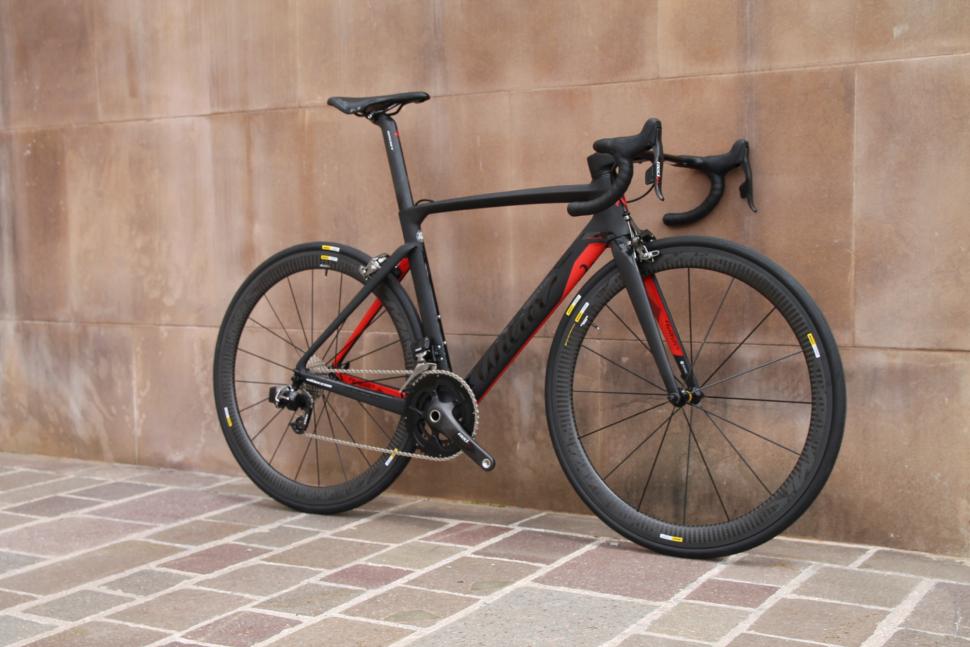

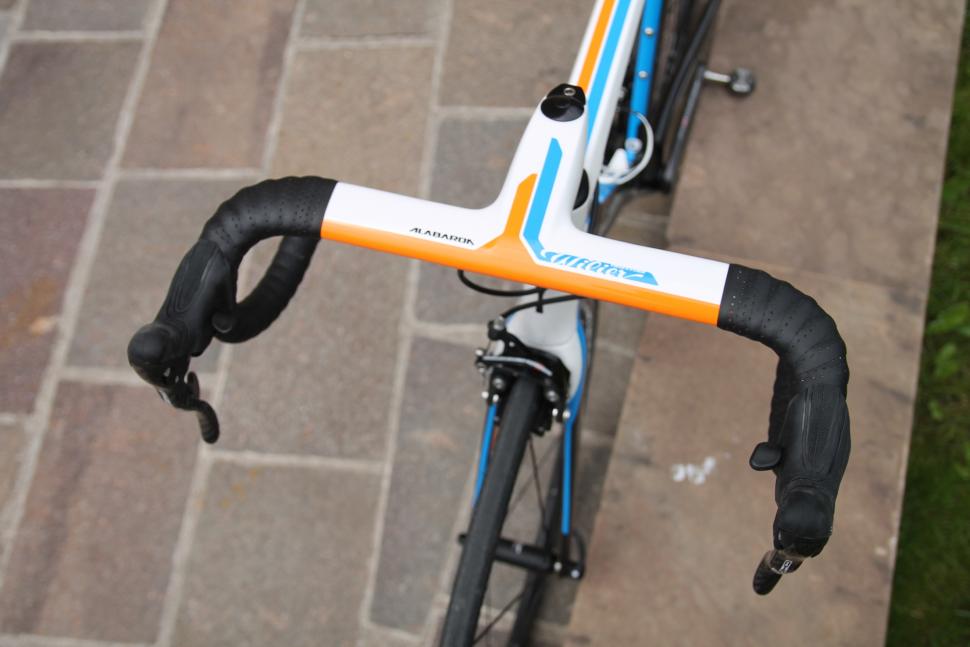
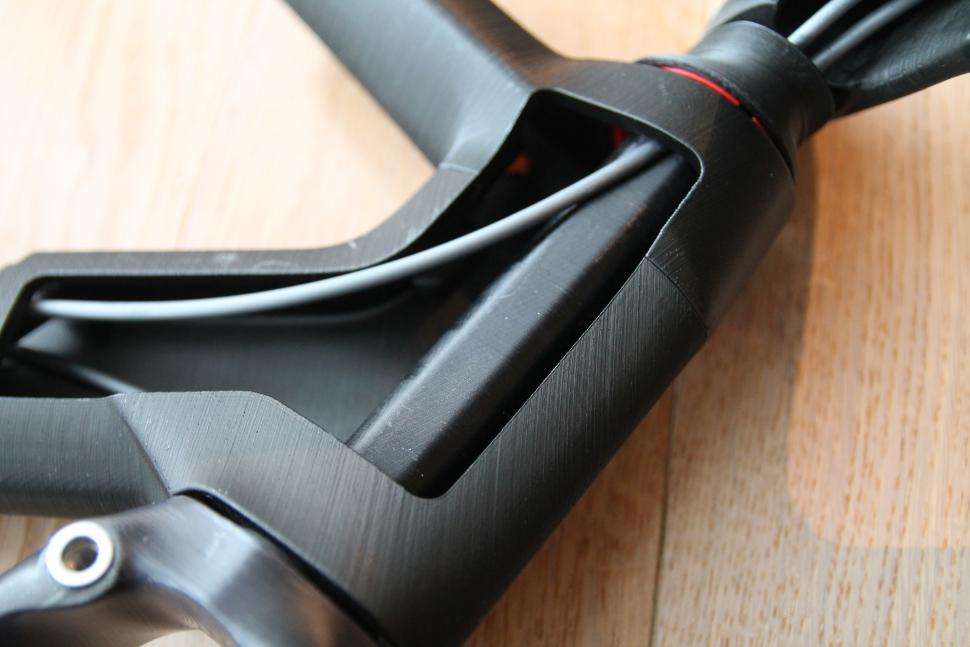
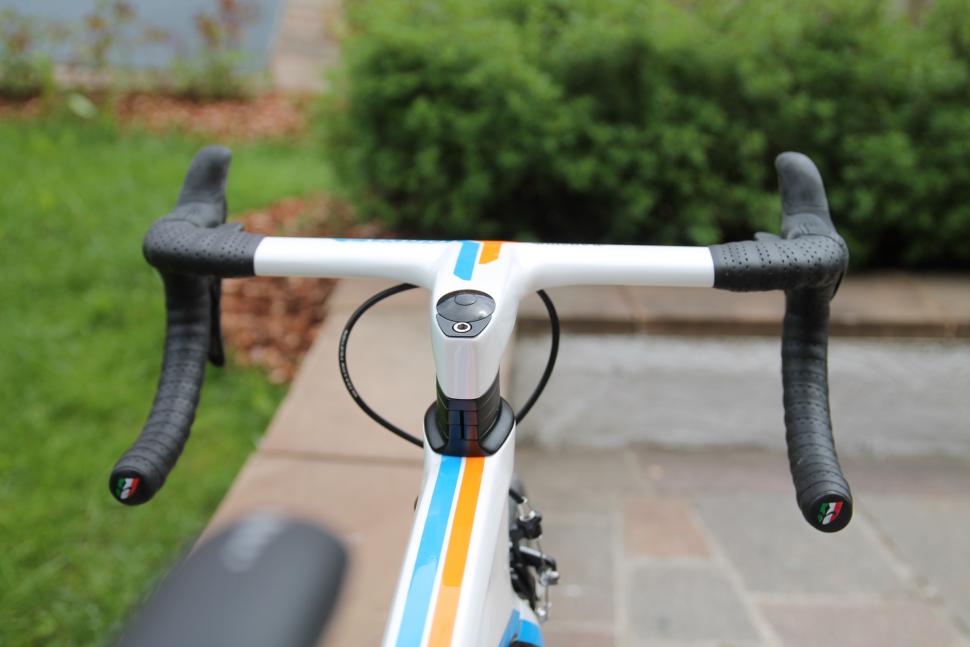
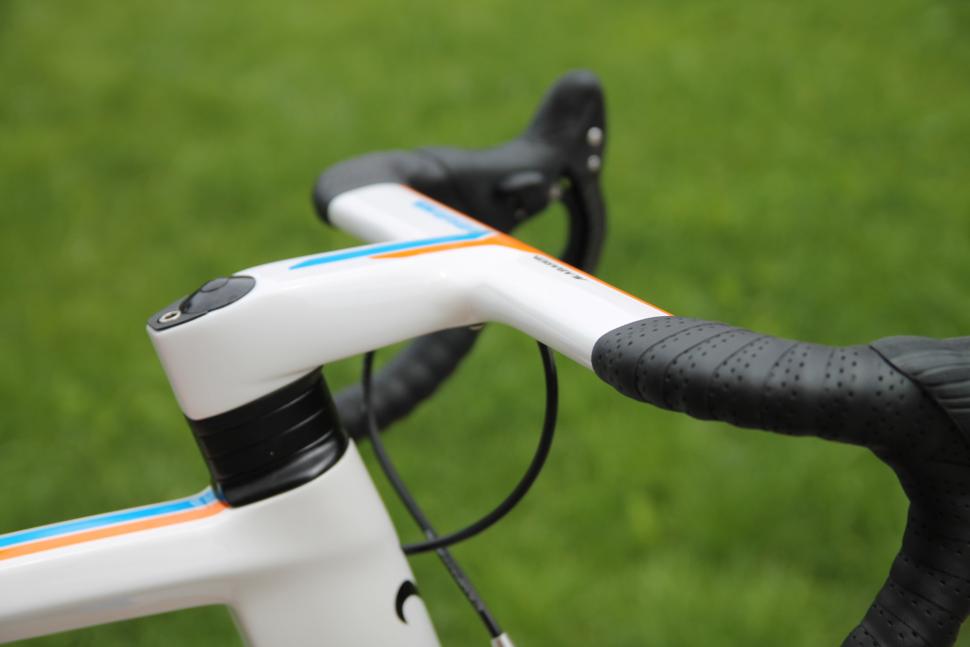
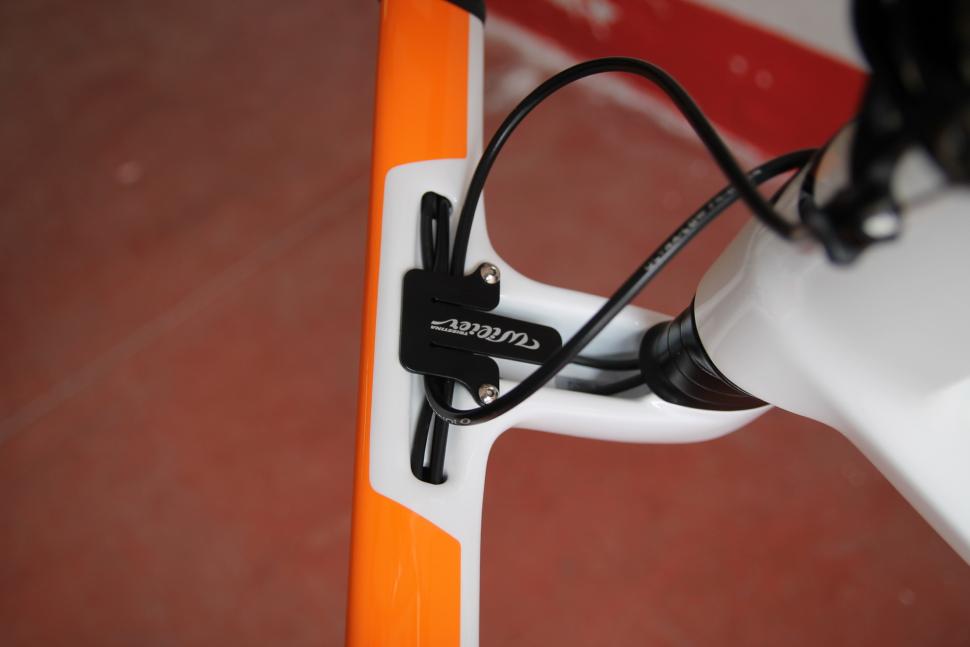
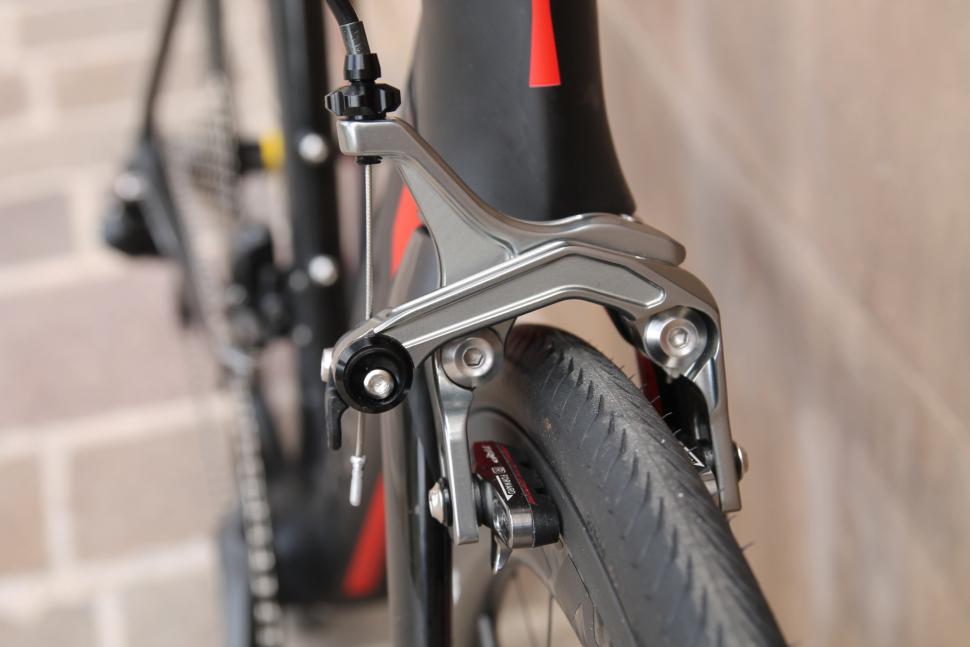
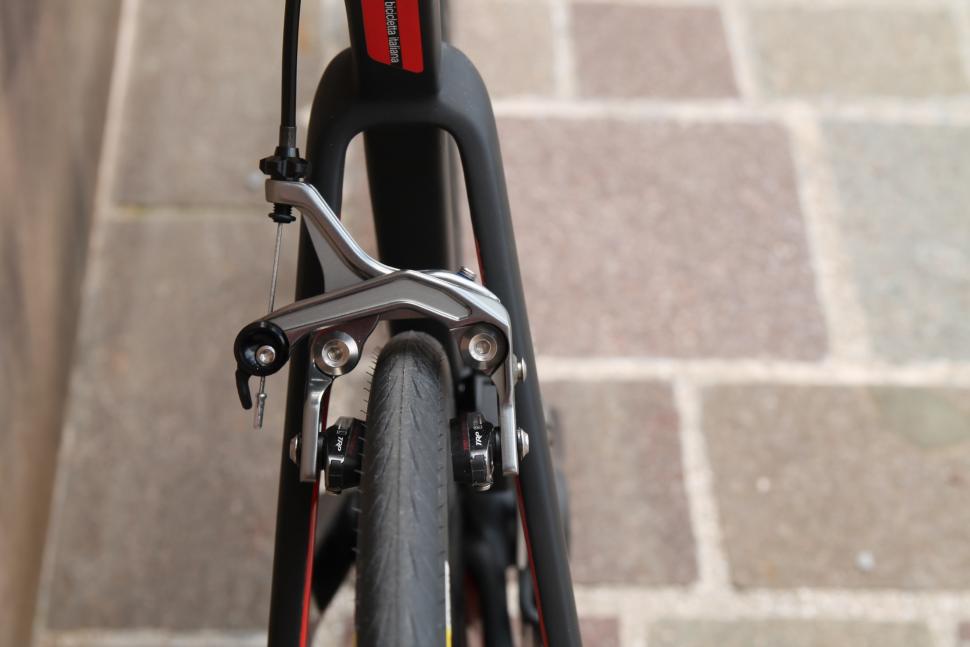
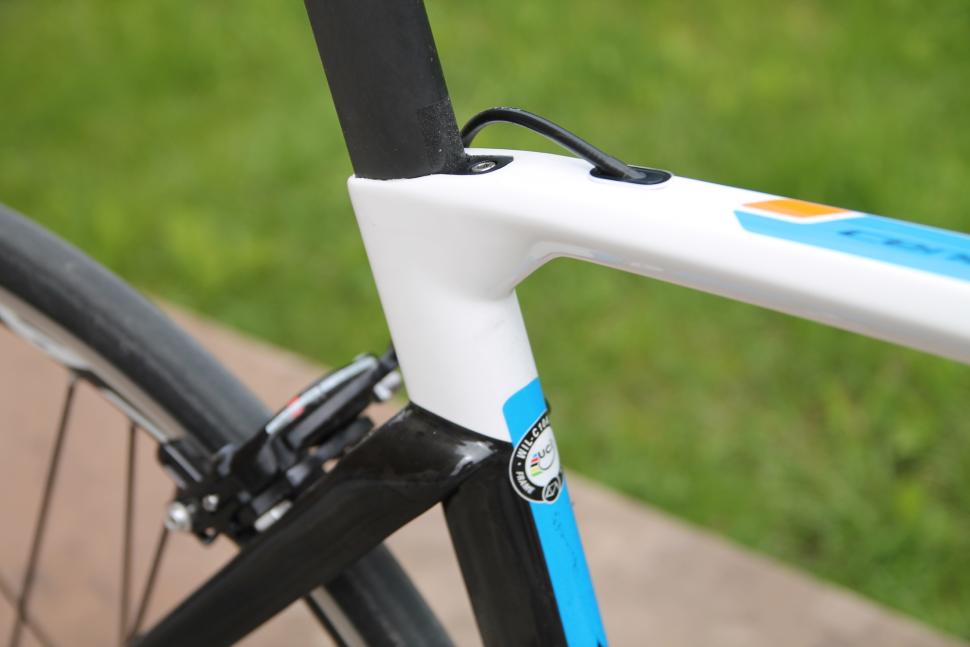
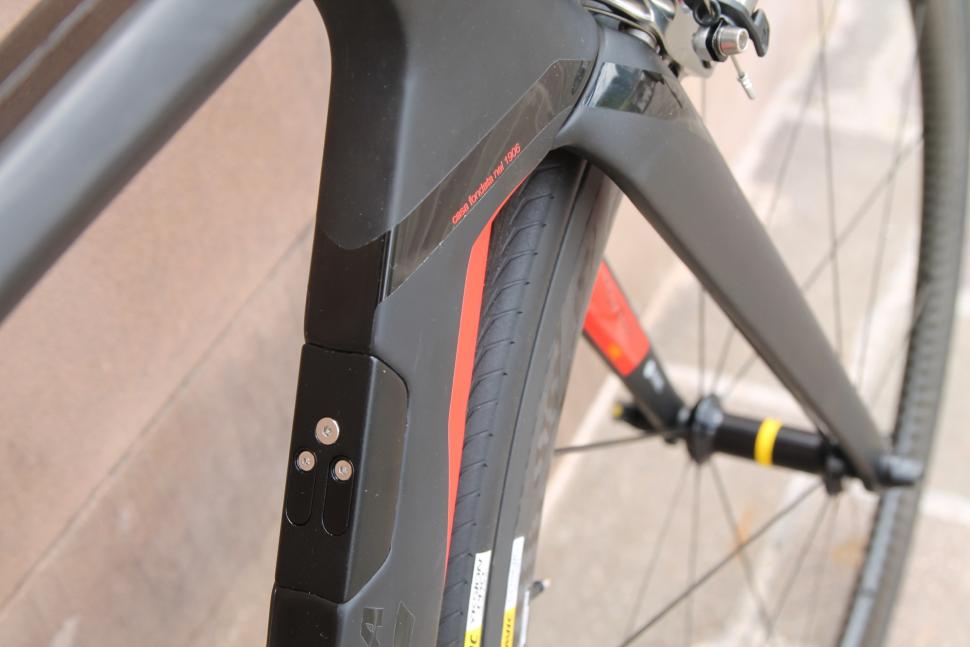
Add new comment
9 comments
I've just spent the past week test riding a beautiful red, XL Cento10 Air, equipped with Chorus / Eurus kindly lent to me by CycleSurgery. As my normal rides are a Litespeed Siena / Dura-Ace / Open-Pros and a Colnago C50 / Record / Hed, this is a very different machine that took a couple of rides to get used to. FYI I do between 300-500km a week and would describe myself as a leisure rider - I'm not part of a club, I don't race, but I do the odd European sportive (usually with cobbles). I'm 195cm tall and couldn't go smaller than XL, and might have been more comfortable on an XXL.
In comparison to my own bikes, the Wilier is light, with highly responsive steering geometry, very stiff with direct power transfer, a fairly agressive riding postion over the (surprisingly comfortable) aero-bars, but also absorbent and comfortable enough for our gravel-chipped, rough roads - even with Eurus wheels, which wouldn't be my first choice.
The stiffness and power transfer are most noticable when climbing (as all the pedal power goes into forward propulsion - I'm smiling even thinking about this) and tacking along at speed on the flat, where it springs to life and is much easier to hold a higher speed than my own machines (that's 35kph+ for me, I'm getting on a bit)... On rapid descents and quick cornering its planted, but doesn't seem as sure-footed as the C50 (though that might just be me).
I've covered just over 700km on it over the past week and after a bit of an iffy start, I'll be sorry to hand it back tomorrow. Now, would I buy one? I'd probably want to try one or two other frames before handing over the cash, but this would defintely be on my short list. The only thing that's stopping me is the recognition that this is a bike for riding fast - totally slammed compared to my other bikes - and I'm not sure it would suit my pootling around Kent and the Ashdown Forest in the long term. That said, I may have a different view when I get back on my Litespeed!
That's beautiful. Well thought out too. N+1...
The bullet point summary at the top is a great addition Road.cc. Keep them coming,
A Wilier I actually find very pleasant to look at - especially the one with white, orange and blue.
I'm a little concerned about the fork's D-shaped steerer tube, and the headaches associated with PF30, but everything else looks very tasty.
Any hope of a disc brake version?
Considering they've stated that they didn't do wind tunnel testing (to save money) and that this isn't the lightest version of the frame they think they could make (presuming that it's not the most expensive carbon they could have used) and they've used off the shelf direct mount brakes (likely cheaper than developing an integrated solution but probably simpler) they don't exactly seem like an absolute bargain (then again Wilier rarely are I guess).
That being said, it is quite pretty and seems to have a little less of the acronym explanation scrawl all over it than usual.
Looks a lot like Dogma F8 . . . . with just bit different front fork
Lovely bike. Are you sure that the Chorus build is £200 cheaper than Ultegra, not the other way round? If you're right, that looks like a bit of a bargain, depending on the wheels they bolt on.
Beautiful bikes, quite understated. Normally with Wilier, if you get bored on a ride you could always stop and read your bike for half an hour...
It'll do for the winter bike..